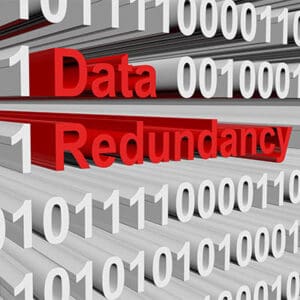Download the Business Owner's Cybersecurity Blueprint

100% Free & Secure - We will never sell your information.

If you were to lose your business’ data, would you be able to continue operations? Usually not. This is why you need to take precautions before you inevitably suffer from an unpredictable situation that puts your data at risk. Unfortunately, the average small business might not think they are at risk, a notion we are trying to dispel. If your organization is considering backup and disaster recovery, we want to help you better understand data redundancy.
Redundancy is a term which has increased in usage thanks to the business world. Generally speaking, redundant means not needed or superfluous, but when it comes to data, having a second copy (or more) can’t hurt. It’s better to be prepared for the worst, after all.
The act of having a second or third copy of your data in the event that something goes wrong, and your data is unavailable is called data redundancy. Here are some of the most important aspects of data redundancy to keep in mind when thinking about data backup and disaster recovery.
Your data backup solution can likely only handle so much. For example, if you choose to take a backup after your business closes for the day, you’re only taking one data backup every day. You could potentially lose out on an entire day’s worth of productivity and effort. Ideally, you want a data backup solution that can take a backup as often as every fifteen minutes, as this minimizes potential data loss. The incremental data backup solution provided by Reciprocal Technologies in the form of our BDR service allows for smaller, more frequent backups taken throughout the workday, fostering redundancy of your data and leading to minimal interruptions.
As previously mentioned, the amount of time it takes to recover can be a major challenge for some businesses. Since tape backup can take ages in order to fully restore your data, you’ll want to opt for a system that can practically instantaneously restore your business’ data to any able device. A comprehensive backup and disaster recovery system (BDR) that uses cloud technology, can accomplish this, providing your organization with minimal downtime and maximum redundancy.
Redundancy is all about storing your extra data in places where it is safe from harm. You should generally follow what’s called the 3-2-1 data backup rule, which states that you should have (at least) three copies of your data in total, two of those copies on separate hardware, and one of those copies stored securely offsite (like in the cloud).
How does your business ensure data redundancy? Call Reciprocal Technologies today to talk to one of our knowledgeable professionals about our Data Backup and Disaster Recovery solution right now at 317-759-3972.
Author’s recent posts
